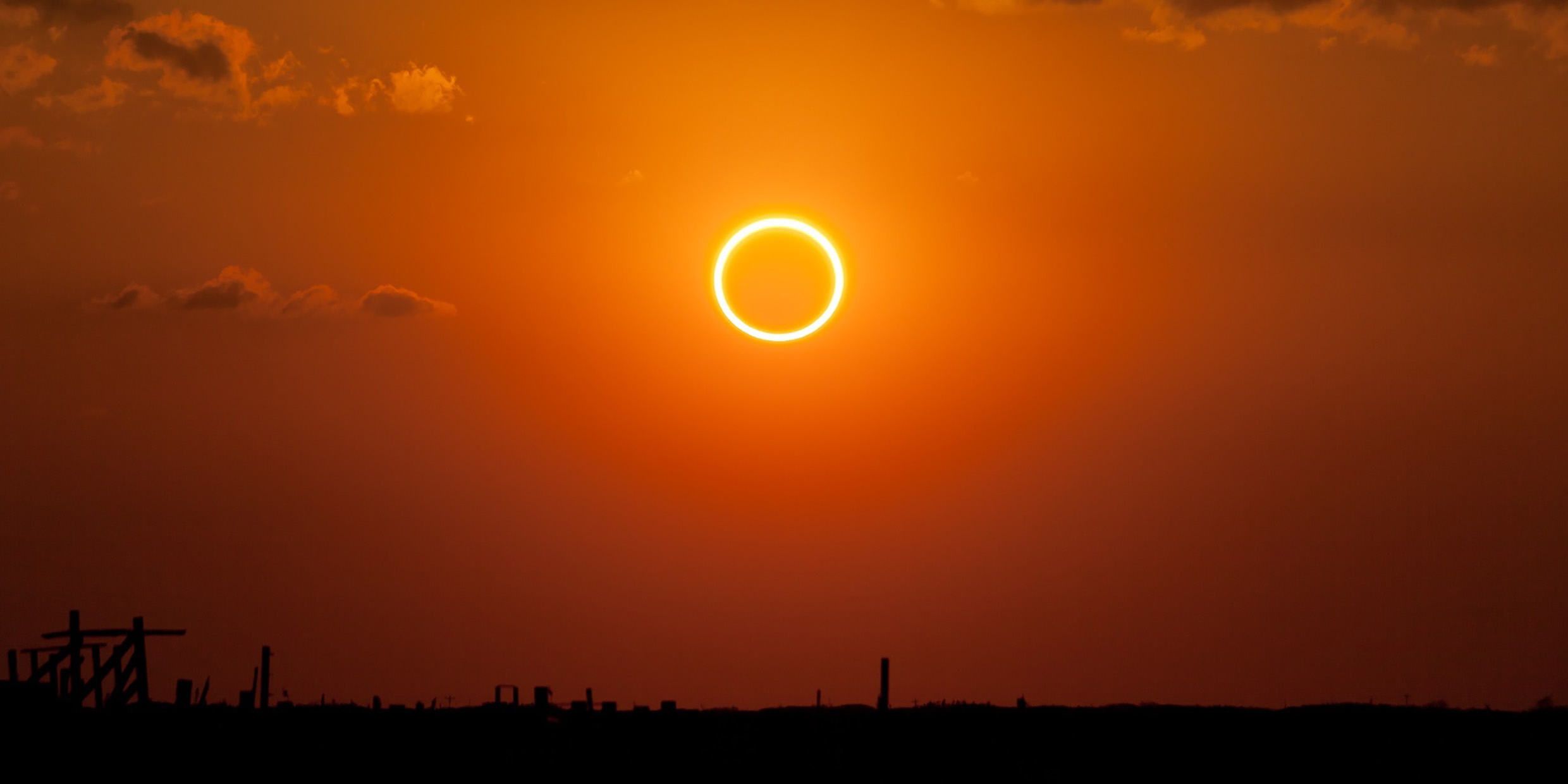Originally published 21 May 1984
The night has a shape and that shape is a cone. In Shelley’s “Prometheus Unbound” the Earth speaks this line: “I spin beneath my pyramid of night, Which point into the heavens, dreaming delight.”
Astronomy and optics can prove that the Earth’s shadow is cone-shaped and points darkly into sunlit space. But it takes Shelley’s line to visualize night as a tall pyramid of darkness receding from the globe.
Earth does indeed wear night like a wizard’s cap. The wizard’s cap is long and slim and points away from the Sun. It is 8000 miles in diameter at the rim, where it fits snugly on the Earth’s brow. It extends to a vertex 860,000 miles from the Earth. The wizard’s cap of shadow is a hundred times taller than it is wide at the base.
The Earth spins beneath its cone of night. The Earth orbits the Sun and its shadow cap goes with it, always pointing toward infinity. In that darkling cap badgers scuttle in ditches. Bats thrash the night air and squeal a cry that only children hear. Owls in oaks hoot at the Moon. In that darkling cap go possums, foxes, raccoons, the creatures with the big eyes, glow-worms, will‑o’-the-wisps.
The Earth’s cone of night reaches out into space three times farther than the distance to the Moon. The Moon’s orbit is slightly tipped to the plane of the Earth’s motion about the Sun, so the Moon does not pass through the Earth’s shadow on every monthly circuit of the Earth. Occasionally, when the circumstances are right, the Moon passes directly through Earth’s cone of night and we have an umbral eclipse of the Moon. This can happen several times a year, but in 1984 it will not happen even once.
Like the Earth, the Moon also wears a cone of night and a little over a week from now — on May 30—its apex will almost touch the Earth, running, in the United States, on a line from New Orleans to Virginia. Along this line the eclipse will be almost total, darkening the sky. In the New England area, the eclipse will be partial. With 90 percent of the Sun covered, the sky will darken slightly. In the Boston area, it will begin at 11:31 a.m. and end at 2:34 p.m. Maximum coverage of the Sun will occur at 1:02 p.m.
The last eclipse of the Sun in the Boston area happened on Feb. 26, 1979, but not many people noticed it — there was a sleet storm that day.
A wizard’s cap of darkness
Every object near a star casts a pyramidal shadow. If an astronaut floating free in space were to put his feet toward the Sun, his wizard’s cap of darkness would be 100 feet long.
The Moon’s cone of shadow, by coincidence, is almost exactly as long as the average distance of the Moon from the Earth — 240,000 miles. If the moon is near apogee (its greatest distance from the Earth) when it passes between the Earth and the Sun, the vertex of its shadow will fall just short of the surface of the Earth. In this circumstance the Sun is still visible around the Moon as a ring of brilliant light, and we have what is called an annular (“ring-shaped”) eclipse of the Sun.
When the Moon is not near apogee, its shadow reaches to the Earth, and when the Moon passes between Earth and the Sun the apex of its shadow slices the Earth like the tip of a surgeon’s knife. Those lucky enough to live within the swath of that stroke will experience on of nature’s most spectacular special effects, a total eclipse of the Sun. The last one occurred last July and was seen in the South Pacific. Viewers of a total eclipse stand in the tip of Moon’s night, a few moments of borrowed darkness in daytime when baffled badgers peek from their burrows and owls hoot in wonder.
A feather touch
Sometimes, when the Moon is just the right distance from the Earth, its shadow brushes the surface of the Earth as gently as the tip of a feather and the eclipse of the Sun — such as the one next week — is at the borderline between annular and total. The Moon’s shadow will reach to within a narrow distance of the Earth’s surface — a few score miles. The May 30 eclipse will be very close to total from New Orleans to Virginia. The mountains on the Moon’s limb will reach to the Sun’s edge and cover it. For a few seconds, sunlight will glimmer through lunar valleys like diamonds on a necklace, like a bowl of light reduced to its broken glittering rim.
Observers in New England who do not wish to travel south will still have the opportunity to observe a partial eclipse of the Sun. For a few minutes, the face of the Sun will be almost completely covered by the Moon, and the day will be eerily dimmed.
In Shelley’s poem, this is the full line the Earth speaks: “I spin beneath my pyramid of night, Which points into the heavens, dreaming delight, Murmuring victorious joy in my enchanted sleep; As a youth lulled in love-dreams faintly sighing, Under the shadow of his beauty lying, Which round his rest a watch of light and warmth doth keep.” It is one if the loveliest images in all of literature. And the Moon responds: “As in the soft and sweet eclipse, When soul meets soul on lover’s lips.” On May 30, the Moon will interrupt the Sun’s watch of light and warmth with a kiss so gentle it will be barely felt.
South America just witnessed a total solar eclipse on July 2, 2019. The next annular solar eclipse visible in North America will be in 2023, and a total solar eclipse is visible in 2024. ‑Ed.



